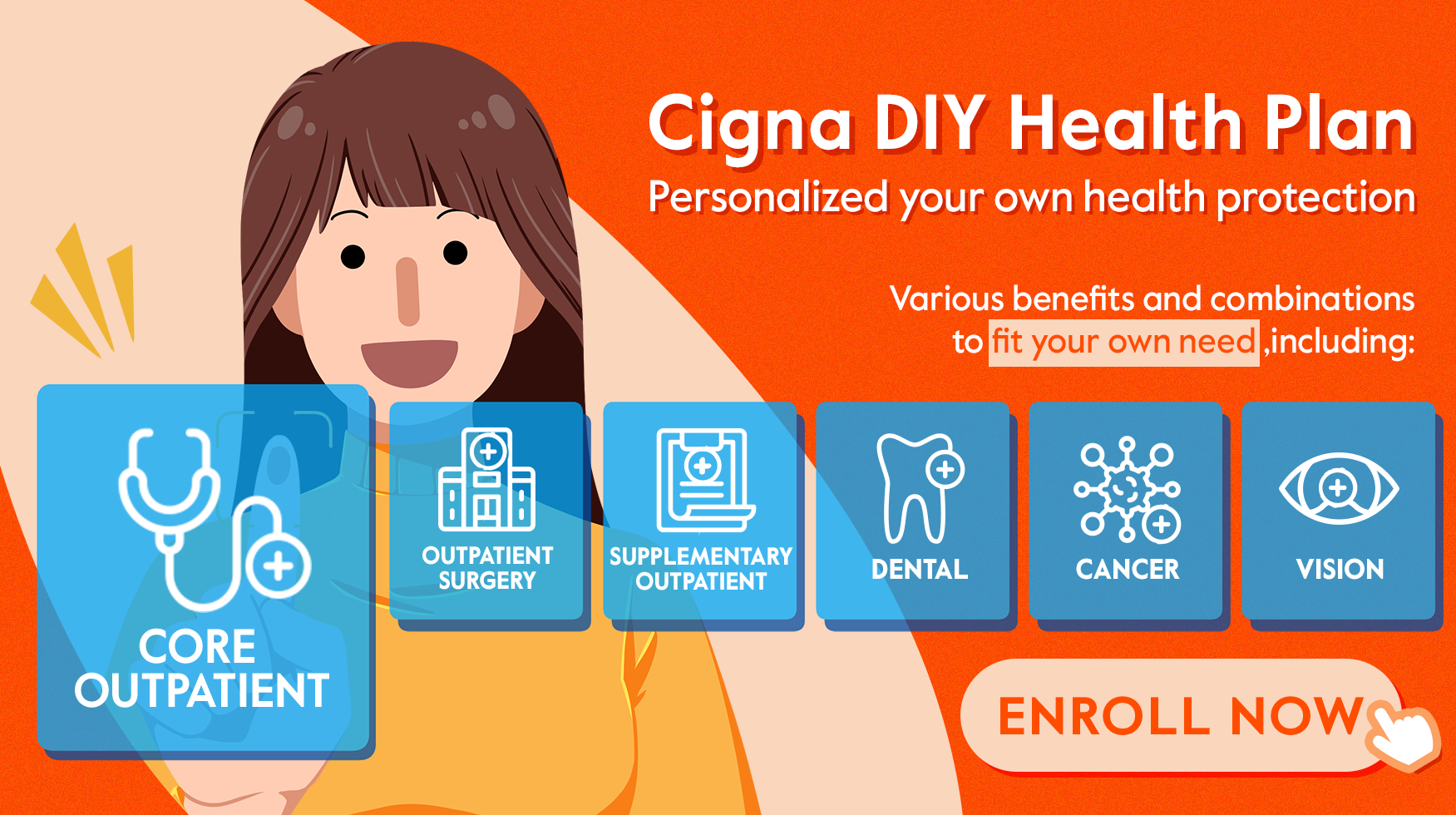Anterior cruciate ligament (ACL) injuries or tears are common sports injuries due to over-twisting or over-bending the ACL. According to The Chinese University of Hong Kong research, more than 2,000 cases of ACL injuries are recorded each year, but what do you know about this common injury? Let Cigna Smart Health explain the diagnosis, treatments, recovery to complications to you in this article.
What Are Anterior Cruciate Ligament (ACL) and Posterior Cruciate Ligament (PCL)?
The anterior cruciate ligament (ACL) and posterior cruciate ligament (PCL) are two major ligaments in the knee that work together to provide stability. The ACL prevents the tibia from sliding forward along the femur, while the PCL prevents the tibia and femur from sliding backwards.
Since ACL controls the knee movements, including rotation, pronation, eversion and bending, which are required during intense exercising. Compared with its counterpart (PCL), ACL has a higher chance of rupture when jumping, twisting or sudden stops even though you have your warm-ups done.
Causes of ACL Tears
ACL tears is the most common knee injury which accounts for 40 percent of all sports injuries. Overextension or overtwisting of the calves or knees is considered the major cause of ACL injury.
The anterior cruciate ligament can be injured in several ways, such as:
- Landing awkwardly from a jump
- Stopping suddenly
- Suddenly changing direction
- Having a collision during sports
What Should You Do When Getting an ACL Injury?
Most ACL injuries are considered acute, and the ACL cannot heal on its own. For first aid, you should rest the knee, put ice on it and consult your doctor as soon as possible. Your doctor may adopt the below early-stage treatments, including:
- Medication
- Ice pack
- Wearing stabilising devices
- Physiotherapy
However, these non-surgical treatments can only relieve the pain and swelling at the site. Depending on the severity of your ACL injury, your doctor will determine whether an ACL reconstruction surgery is required.
Symptoms of ACL and PCL Injuries
When the ACL is in rupture, your knee would be unstable, hindering your ability to move the joint. If you suspect a torn or injured ligament, you should conduct an initial self-test by observing the following symptoms.
|
Sites |
Symptoms |
|
ACL |
|
|
PCL |
|
If you observe the above symptoms, you should visit your doctor at your earliest convenience. Your doctor will conduct an MRI scan to determine whether there is a tear. Since ACL tears may damage some associated ligament tissues or meniscus, your doctor may also perform an X-ray test to understand the severity and areas of injuries.
Treatments for ACL tear
Not everyone with an ACL rupture will need surgery. In general, doctors may treat mild cases or inactive people with ACL injuries by incorporating physiotherapy and rehabilitation to improve the stability and movement of their knees. Even without an intact ACL, it is adequate for them to continually use their knees for walking or even jogging if the patients are willing to change their habits and reduce the motion such as twisting or cutting their knees.
However, the patient may experience recurrent knee instability, or 'giving way', leading to meniscal tear, cartilage damage and eventually arthritis. As mentioned, an ACL tear does not heal on its own. Whenever the patients perform sudden stopping, twisting, jumping or changing direction, their ACLs may be torn again and slow down the recovery.
When Do You Need To Conduct A Surgery?
Reconstruction surgery is effective to treat ACL injury. Hence, it is recommended to conduct this surgery. Besides, if you find it hard to walk or go upstairs with impaired ligaments, you should consider having surgery. For athletes or professional players, it is common for them to conduct the surgery in order to fully resume their performance.
Benefits of surgical treatment:
- Relieve the discomfort of the unstable knee
- Retrieve the stability of the knee
- Recover the motion of the knee
- Resume sports activities
- The most effective way to treat severe ACL injuries
- Reduce the chance of having meniscal tears, cartilage damage and arthritis.
Post-Surgery Recovery
Generally, you can go home and take a rest on the other day after the surgery. During the first few days, you could walk with aids but you may feel slight pain or sour. Two weeks after the surgery, most patients can walk freely without aids. Around six months to one year, they can play sports games and recover entirely.
After the surgery, you should:
- Wear stabilising devices and use walking aids to help stabilize the knees for the first few weeks
- Take more rest during the recovery
- Conduct regular physiotherapy or knee rehabilitation to strengthen the thigh muscles and knees to speed up the recovery.
ACL injuries take a long period to recover. Fortunately, you are able to return to your sports activities or training when fully recovered. If you follow your doctor’s advice strictly to take adequate rest and receive physiotherapy regularly, your muscles connecting the knee can be restored with strength and flexibility so that you can regain your full performance.
ACL injuries take place despite adequate warmup, so get yourself well covered with a comprehensive medical plan! Cigna DIY Health Plan enables you to freely choose from various protection benefits to customise your plan to your individual needs, including dental coverage, regular oral check-up, treatment cost and emergency. Tailor your health coverage now.


